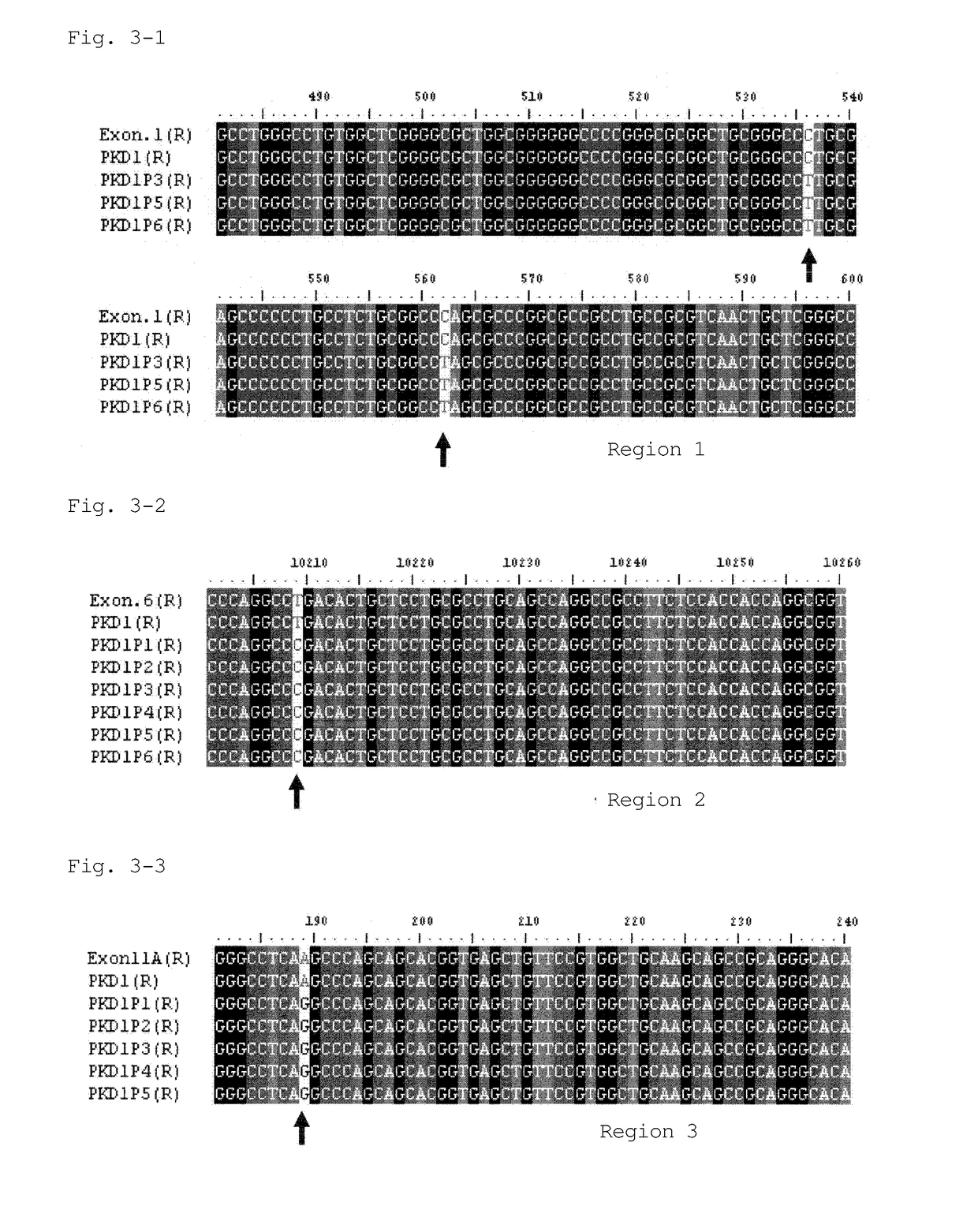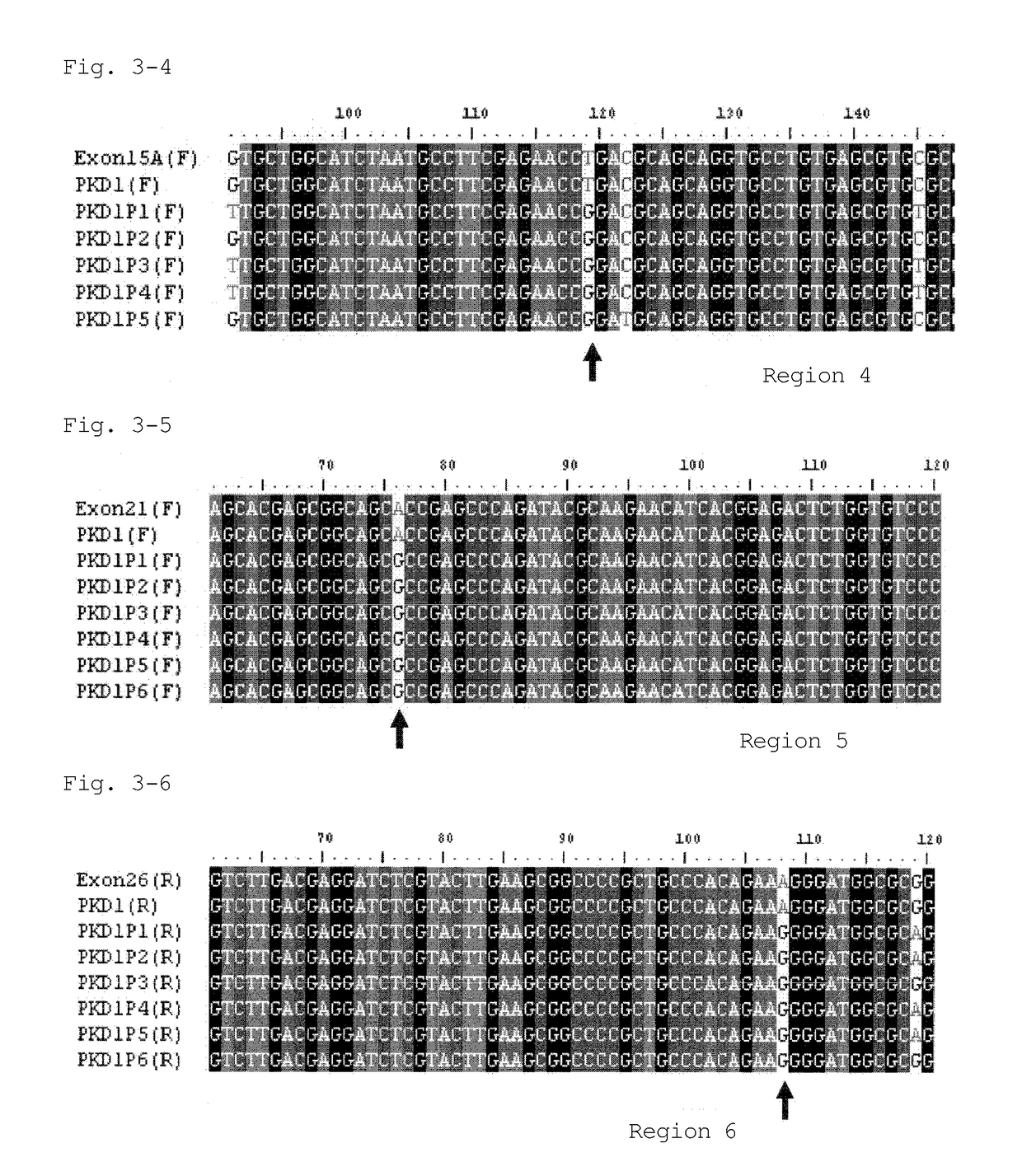Primer set and method for amplifying exons of pkd1 gene and pkd2 gene
a primer set and exon technology, applied in the field of primer sets and methods for amplifying the exons of pkd1 and pkd2 genes, can solve the problems of reducing renal function, increasing kidney volume, and requiring dialysis, so as to avoid the amplification of pseudogenes, efficient amplifying, and efficient amplifying
- Summary
- Abstract
- Description
- Claims
- Application Information
AI Technical Summary
Benefits of technology
Problems solved by technology
Method used
Image
Examples
examples
[0148]The present invention is described in further detail with reference to Examples and Comparative Examples. However, the scope of the invention is not limited to these Examples.
1. Subjects
[0149]Tests were performed using 140 samples collected from healthy (male and female) adults 35 years of age or older, who had no kidney cysts in ultrasound examination and who were definitely not predisposed to PKD. In this specification, the analytic results of 6 out of 140 samples are shown as representative examples. The DNA samples were collected in the following manner. 7 mL of peripheral blood collected from each healthy adult was placed in a vacuum blood sampling tube. After gentle end-over-end mixing was performed two or three times, the samples in the sampling tubes were frozen and stored in a freezer of a blood sampling facility. Genomic DNA was extracted from the cryopreserved blood using a QIAamp DNA Blood Maxi kit (a product of QIAGEN K.K.). The obtained genomic DNA was used as sa...
PUM
| Property | Measurement | Unit |
|---|---|---|
| temperature | aaaaa | aaaaa |
| Tm | aaaaa | aaaaa |
| Tm | aaaaa | aaaaa |
Abstract
Description
Claims
Application Information
 Login to View More
Login to View More - R&D
- Intellectual Property
- Life Sciences
- Materials
- Tech Scout
- Unparalleled Data Quality
- Higher Quality Content
- 60% Fewer Hallucinations
Browse by: Latest US Patents, China's latest patents, Technical Efficacy Thesaurus, Application Domain, Technology Topic, Popular Technical Reports.
© 2025 PatSnap. All rights reserved.Legal|Privacy policy|Modern Slavery Act Transparency Statement|Sitemap|About US| Contact US: help@patsnap.com



